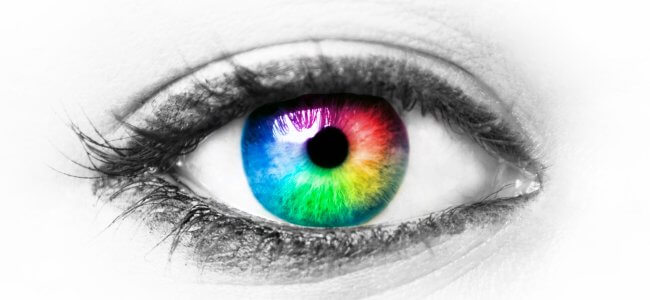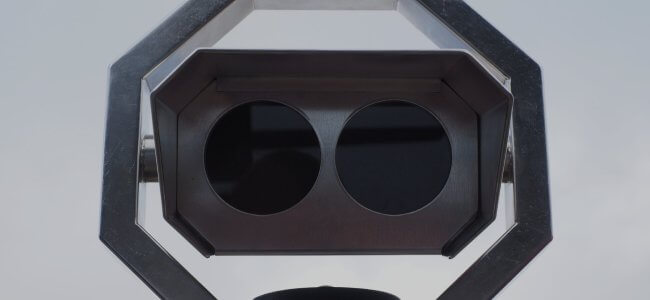Squint: types, symptoms and treatments

Dr Valeria Russolillo, Orthoptist Assistant of Ophthalmology, offers us an in-depth study on squint, also called strabismus.
The squint: how is it defined?
A misalignment of the visual axes caused by an alteration of the neuromuscular mechanisms that control eye movements.
It is a disease that affects 4-5% of the population, therefore it can be defined as relatively common and can manifest itself at any age. The age of onset is fundamental, not only to set the rehabilitation path of the patient, but also in the attempt to solve the symptomatology that such pathology involves during the monitoring period, which is necessary to establish the best course of treatment.
When you refer to this problem you commonly think of the so-called “crooked eyes”, in fact this that we have in mind is just one of the many paintings that have been portrayed. Let’s imagine that we are at the Uffizi to admire the Renaissance paintings and that each painting is a type of eye deviation, each painter has made their own work with unique and peculiar techniques, making it unrepeatable as it happens in different kinds of problem.
Moreover, as it happens that only the most famous paintings among the countless works are universally known by any type of audience, so it occurs in our case that the squint of Venus is the most known to the public precisely for its popularity.
Here is a short video published by CENTRO OCULISTICO BRESCIANO | OCULISTA BRESCIA in which an overview of this issue is given.
The squint of Venus
In this variant, one or both eyes do not appear perfectly straight and aligned with each other. It is said that even Venus, the goddess of beauty and love, had this characteristic that is still associated with a particularly fascinating look (similar to that of the famous actress Scarlett Johansson). This tendency can be either in convergence or, more frequently, in divergence and is completely involuntary.
It can become pathological if the visual axis deviates beyond a certain limit and lead, with time, to stereopsis: loss of the ability to merge images at the level of the visual cortex and loss of simultaneous perception of the images captured by the two eyes. This is followed by a very specific symptomatology that can begin with a felling of burning and/or tearing eyes, headaches and visual asthenia, as well as a tendency to keep one eye closed, and diplopia (double vision).
Every patient who encounters this issue, represents a clinical picture, with a personal history, therefore a history of its own onset, an evolution that can mean an improvement or a worsening of eye motility or symptomatology, the presence or not of concomitant systemic or local eye diseases and a different course and resolution for each person.
Causes of squint
The causes are numerous, but can be classified according to the age of onset.
The congenital squibs, present since birth are attributable to pathologies such as:
- congenital cataract
- congenital primary glaucoma
- ptosis
- premature retinopathy
- congenital corneal opacity etc.
These pathologies usually cause amblyopia from deprivation: they prevent light from passing through the pupillary foramen, reaching the retina and developing vision. The term amblyopia indicates a reduced visual acuity, usually unilateral, caused by an obstacle to normal sensory development and can be partially or totally solved with eye rehabilitation treatments.
The above-mentioned causes may be responsible for the onset of this problem even if they occur in adulthood, although this instance does not entail a reduction in the visus of the deviated eye, but diplopia.
In patients from seven years of age, the visual system is defined as mature, which means that our brain is accustomed to receiving images from the two eyes and can no longer suppress one.
This age group can develop secondary squint because of:
- trauma
- neurological diseases
- dysmetabolism.
Traumas affecting the orbital region such as, for instance, fractures of one of the walls of the orbit, can lead to an imprisonment of an extraocular muscle, resulting in diplopia.
Neurological pathologies
When this issue is due to neurological pathologies, it tends to be variable and to change from the moment of its acute onset and during the monitoring period also as a consequence of medical drug therapy. In these cases, we recommend close monitoring of the oculomotor picture with study of ocular motility and Hess screen for the first year ( or more ) of onset of this problem.
Systemic pathologies
Other systemic pathologies (such as diabetes and arterial hypertension) if not well controlled may result in the onset of this problem; in this case, it is important to monitor the oculomotor picture and evaluation by the doctor specialist.
Untreated defects in vision
Incorrect vision defects are another very common cause. Today there is a strong awareness of prevention, especially for those diseases that develop in children, in fact paediatricians invite to perform an orthotic screening for the study of eye motility, so as to exclude the presence of strabismus due to incorrect hypermetropies, myopias and astigmatisms.
Some of these issues can be solved completely or largely with the use of glasses.
Other types of squint
There are other forms with well-defined characteristic (making them easier to diagnose) such as Duane’s Syndrome and Brown’s Syndrome.
Duane’s syndrome
Duane’s syndrome is a congenital form, in which the angle of squint varies based on the gaze positions and is greater in the direction of gaze of the affected muscle, and it is characterized by difficulty in adduction of the eye (that is, difficulty in making it rotate towards the nose, with narrowing of the eyelid rhyme and retraction of the eyeball of the affected eye).
Brown syndrome
Brown syndrome can be congenital or acquired in adulthood, it is caused by a mechanical obstacle that prevents the affected eye muscle from elevating the eye and making it rotate inward.
Incomitant squint
Among these, the thyroid ophthalmology (whose obvious sign is the protrusion of the eyeballs), defined exophthalmos, with alteration of the extraocular muscles and squint.
Other classifications
Another classification considers the direction in which the eyes deviate.
We speak of a convergency or exotropia when the deviation of the visual axes is evident and the eyes tend to turn towards the nose, divergent or exotropia when, on the contrary, they diverge outwards
Vertical squint is defined as hypertropia or hypotropia when an eye is higher or lower than the contralateral.
Symptoms
As we mentioned above, depending on the age of onset of this problem, the symptomatology changes. In paediatric age, before the visual apparatus can be considered mature, there is no subjective symptomatology that can disturb the patient. Pathognomonic of Leber’s Syndrome, which begins within the first year of life of the patient is the digit Ocular mark of Franceschetti (rubbing and pressure of the eyeball). This sign is an expression of the marked visual deficit to which hypermetropia, convergent squint, photophobia and nystagmus can be associated.
Still in paediatric age, in some latent divergent strabismus, it is possible to find visual fatigue and blurring of the image with convergence deficit and astigmatism.
In adults, squint can have various causes, but it is always characterised by diplopia, visual confusion, and the tendency to close one eye.
Treatments for squint
Treatment is oriented towards rehabilitation in patients with amblyopia, (also known as lazy eye). The therapy treatment can include glasses, penalizing filters able to moderate the light that reaches the eye, and even bandages, in order to develop amblyope.
In patients with squint and diplopia, if they show subjective disabling symptoms, they can be prescribe prismatic lenses tailored to the patient to return to see a single image.
In both cases you can resort to surgery. Surgery has the dual purpose of maintaining the normo-sensoriality of the patient (where possible) and eliminate the diplopia, in addition to the mere aesthetic results.

You are free to reproduce this article but you must cite: emianopsia.com, title and link.
You may not use the material for commercial purposes or modify the article to create derivative works.
Read the full Creative Commons license terms at this page.








